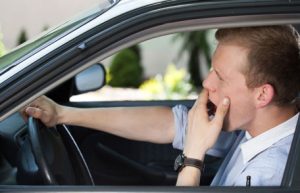 Courtesy of iii.org
Courtesy of iii.org
Alcohol is a major factor in traffic accidents. Based on data from the U.S. Department of Transportation, National Highway Traffic Safety Administration (NHTSA), there was an alcohol-impaired traffic fatality every 51 minutes in 2015.
Alcohol-impaired crashes are those that involve at least one driver or a motorcycle operator with a blood alcohol concentration (BAC) of 0.08 percent or above, the legal definition of drunk driving. According to NHTSA 10,265 people died in alcohol-impaired crashes in 2015, up 3.2 percent from 9,943 in 2014. In 2015 alcohol-impaired crash fatalities accounted for 29 percent of all crash fatalities.
The definition of drunk driving had been consistent throughout the United States until March 2017. All states and the District of Columbia defined impairment as driving with a BAC (blood alcohol concentration) at or above 0.08 percent. In addition, they all have zero tolerance laws prohibiting drivers under the age of 21 from drinking and driving. Generally the BAC limit in these cases is 0.02 percent. In March 2017, the governor of Utah signed a bill, effective December 30, 2018, that lowered the limit defining impaired driving for most drivers to 0.05 percent BAC, the lowest in the nation.
Anti-drunk-driving campaigns especially target drivers under the age of 21, repeat offenders and 21-to 34-year-olds, the age group that is responsible for more alcohol-related fatal crashes than any other. Young drivers are those least responsive to arguments against drunk driving, according to NHTSA.
To make sellers and servers of liquor more careful about to whom and how they serve drinks, 42 states and the District of Columbia have enacted laws or have case law holding commercial liquor servers legally liable for the damage, injuries and deaths a drunk driver causes. Thirty-nine states have enacted laws or have case law that permit social hosts who serve liquor to people who subsequently are involved in crashes to be held liable for any injury or death. (See chart below and Background.)
Recent developments
- Latest data from the National Highway Traffic Safety Administration (NHTSA) indicates that the 10,265 alcohol-impaired fatalities in 2015 accounted for about one out of three highway deaths (29 percent) on U.S. roads. There were 9,943 such fatalities in 2014.
- Ignition interlock systems require drivers to blow into a breathalyzer-like device to ensure the individual is sober before allowing the vehicle to start. According to a report released in January 2017 by the Johns Hopkins Bloomberg School of Public Health, traffic fatalities have declined by 7 percent in states that mandate ignition interlocks for first-time drunken-driving offenders. The researchers studied traffic fatalities for about five years before states began passing interlock laws in the late 1980s through 2013, when all states required them under some circumstances. See Background, Repeat Offenders.
- Drunk Driving by Gender: Latest NHTSA data show that 14 percent of women drivers involved in fatal crashes in 2015 (1,761 drivers) were alcohol-impaired, only 1 percentage point lower than in 2006. In comparison, 21 percent of male drivers involved in fatal crashed were alcohol impaired in 2015, down from 24 percent in 2006.
- Drunk Driving by Age: According to data from NHTSA, in 2015 the percentage of drivers in fatal crashes who were alcohol impaired was highest for 21 to 24 year old drivers, at 28 percent, followed by 25 to 34 year old drivers, at 27 percent, and 35 to 44 year old drivers, at 23 percent. The percentage of alcohol-impaired drivers in fatal crashes was 19 percent for 45 to 54 year olds, 16 percent of 16 to 20 year olds, 14 percent for 55 to 64 year olds, 9 percent for 65 to 74 year olds and 6 percent for drivers over the age of 74.
- Drunk Driving by Vehicle Type: NHTSA data for 2015 show that 27 percent of motorcycle drivers involved in fatal crashes were alcohol impaired, compared with 21 percent of passenger car drivers and 20 percent of light truck drivers. Only 2 percent of large-truck drivers involved in fatal crashes in 2015 were alcohol impaired.
- Social Host Liability: The Massachusetts Supreme Court ruled in February 2012 that social hosts could be held liable for off-premise injury to people caused by the drunk driving of a guest only if the host served alcohol or made it available. People who host “bring your own” parties are free from liability, even if the guest is underage. The court rejected an attempt by the parents of an injured 16-year-old to sue a party’s 18-year old host. The younger person suffered injuries in a crash in a car driven by someone who brought his own alcohol to the party. At issue was the fact that the driver, not the party host, supplied the liquor. Although the lawsuit contended that the host should be found negligent for allowing the driver to drink at her home, the court said that earlier rulings showed that hosts can’t be responsible for their guests’ drinking if they don’t control the supply of alcohol. Massachusetts law and court cases have held social hosts liable if they supply alcohol (See chart: STATUTES OR COURT CASES HOLDING ALCOHOLIC BEVERAGE SERVERS LIABLE).
- Also in February 2012 the New Mexico Supreme Court said that circumstantial evidence of a driver’s intoxication was sufficient to support a jury finding that the driver was intoxicated, overruling a decision in a 2004 case. Evidence presented in the earlier trial showed that a driver who struck and killed a motorcyclist had a 0.09 percent blood alcohol content five hours after the crash. The owners of the gas station where the driver worked and consumed a number of beers bought at the gas station pleaded ignorance of the driver’s condition. The court ruled that the blood test results were enough to prove that the driver was intoxicated. The ruling holds liquor sellers responsible for liability where evidence is available under the existing dram shop law.



 2020 has aged us all….
2020 has aged us all….